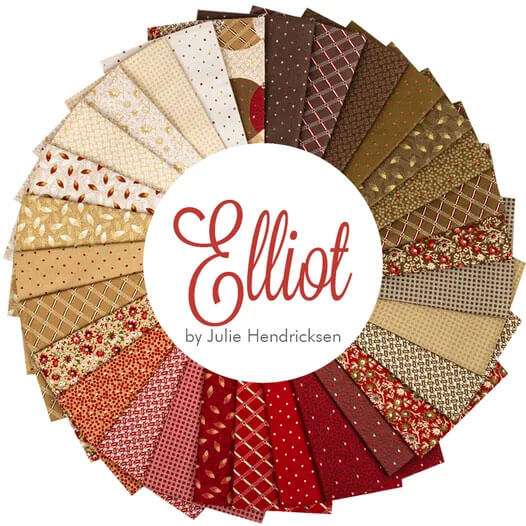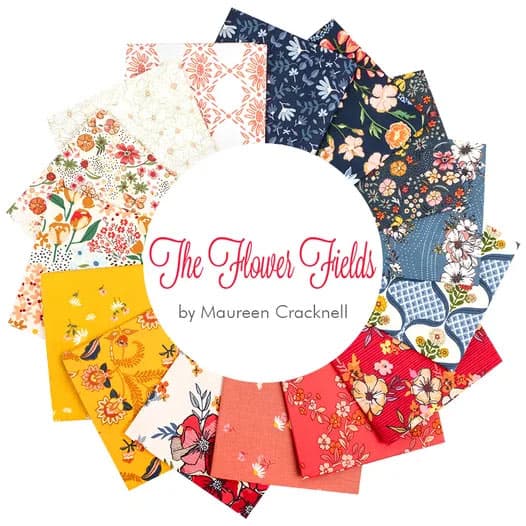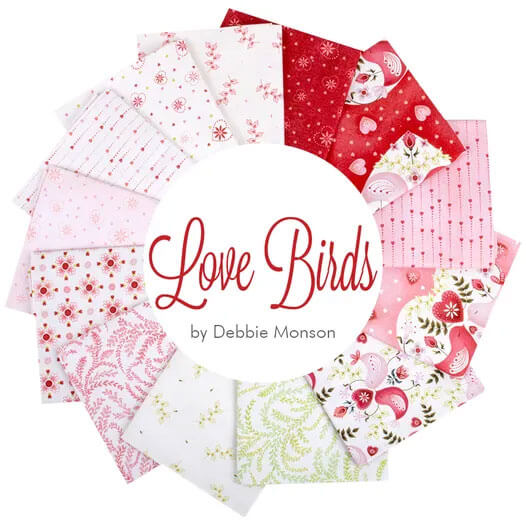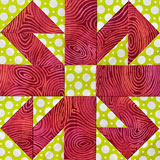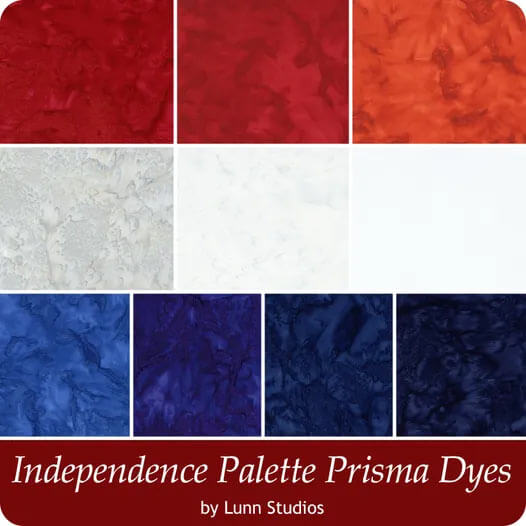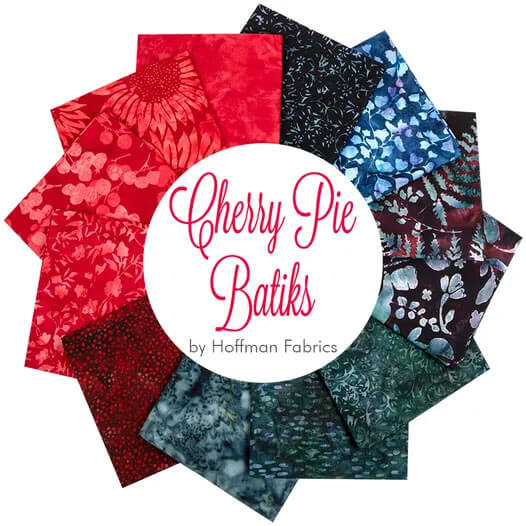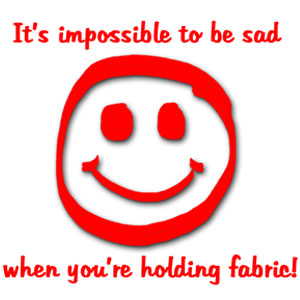- Home
- Free Quilt Block Patterns
- Colorado Beauty Quilt Block
Colorado Beauty Quilt Block: Your Piece-by-Piece Path to a Quilting Panorama🖼️
Your quilting compass points to Colorado 🧭🏔️
This post contains affiliate links, for which I receive compensation.
Skill Level: Beginner
The Colorado Beauty quilt block is a close relation to the Jack in the Box block—the only difference being the sashing between the units and a center square are removed.
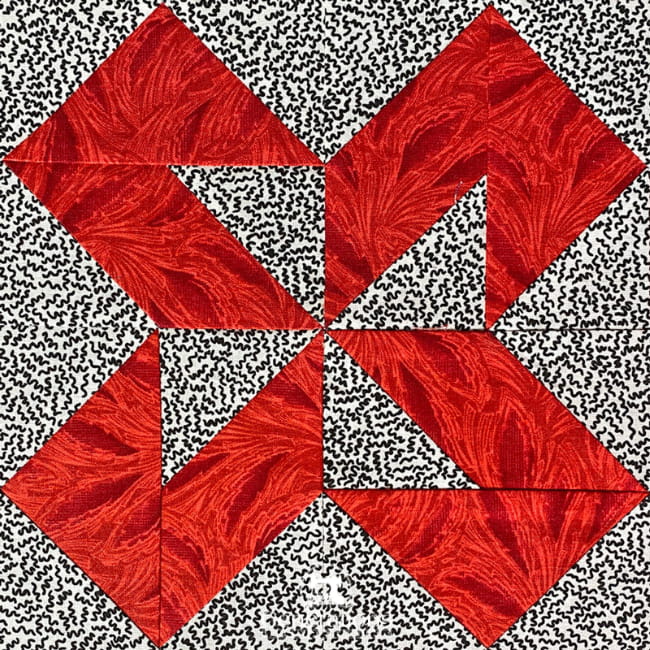
The repeated unit is a combination of a Flying Geese and a rectangle with half square triangles. Both are simple to make using basic piecing techniques.
Neither requires any special tools nor rulers. (YEAH!)
On this page, you'll learn how to make the block using Folded Corners (there is a link to learn how to paper piece the unit, too!)
The beauty of Folded Corners (sometimes called 'sew and flip' or 'stitch 'n flip') is that you start out essentially with a fabric foundation that is cut the exact size. It is a part of the block and there as a reference the whole time. Saaaa-Weet!
Towards the bottom of the page are other blocks that use the same units. If you like making a Colorado Beauty, you just might like making those, too!
Let's get started!
🧭Ready to piece together your Colorado Beauty? 🧩🏔️
Use these links to navigate our tutorial faster than a mountain goat scaling the Rockies! 🐐💨
- A cutting chart in 5 sizes with a download of the chart and block design
Cut. Sew. Press. Elevate your quilting to new heights!
📋 General Instructions
To press, first press the patches as they were stitched, right sides together (RST). Then open the pair and press flat. For the pinnacle in perfectly pressed patchwork, check out our Best Pressing Technique.
📥Optional: Download and print the paper piecing pattern
NOTE: Print these patterns if you intend to paper piece the block. Otherwise, continue on to the Folded Corners cutting chart (green).
You'll need the most current version of Adobe installed on your computer to download the pattern.
On the Adobe Print Menu page, under 'Page Size and Handling' set 'Custom Scale' to 100% before printing for accurate results. Click here to see what it looks like on the Print Menu page.
After printing, use the 1" square graphic on the printed pages to confirm they are printed accurately.
After printing, use the 1" square on the printed copy to make sure the pattern is the correct size.
Download and Print the Paper Piecing Pattern | ||
|---|---|---|
| Finished Block Size | # of copies to print | PDF Download |
| 4" | 1 | 2" |
| 6" | 1 | 3" |
| 8" | 2 | 4" |
| 10" | 4 | 5" |
| 12" | 4 | 6" |
The newest quilt fabrics to tickle your fancy...
Click the images below to see the full collection. We share any commercial and/or free patterns that showcase them, too. (For inspiration, of course!)
✂️Choose a technique, size and cut the patches
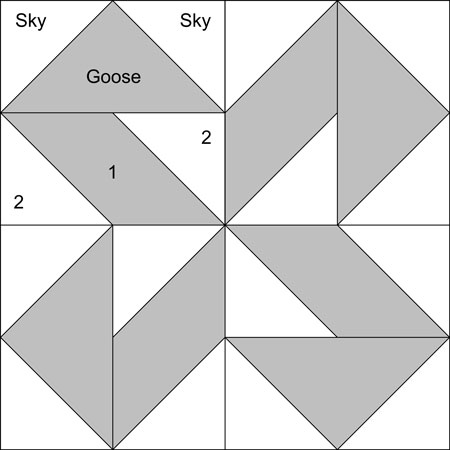 Colorado Beauty design
Colorado Beauty designSample Size: 8" finished / 8½" unfinished
Grid: 4x4
AKA: Colorado Block
Design Type: Pinwheel | 4-patch | Paper Piecing
The charts below are for two different techniques—blue is if you want to paper piece, green is if you choose Folded Corners with traditional piecing.
In the paper piecing chart (blue), the patches are cut over-sized to make placement a breeze.
In the Folded Corners chart (green), patches are cut exactly to size.
Set yourself up for success by labeling each patch. This small step will make a big difference as you work through the tutorial.
Paper Piecing
 | Cutting Chart for a~ Includes Paper Piecing ~ | |||||||
|---|---|---|---|---|---|---|---|---|
| Patch | Fabric | Qty | Finished Block Size | Sub Cut | ||||
| 4'' | 6 '' | 8'' | 10 '' | 12'' | ||||
| 1 | A | 4 | 1⅝'' x 2¾'' | 2⅛'' x 3¾'' | 2⅝'' x 4¾'' | 3⅛'' x 5¾'' | 3⅝'' x 6¾'' | --- |
| 2, Sky | B | 8 | 2⅜'' x 2⅜'' | 2⅞'' x 2⅞'' | 3⅜'' x 3⅜'' | 3⅞'' x 3⅞'' | 4⅜'' x 4⅜'' | |
| Goose | A | 1 | 3⅝'' x 3⅝'' | 4⅝'' x 4⅝'' | 5⅝'' x 5⅝'' | 6⅝'' x 6⅝'' | 7⅝'' x 7⅝'' | |
| Unfinished Block Size | 4½'' | 6½'' | 8½'' | 10½'' | 12½'' | na | ||
| Grid Size | 1 '' | 1½'' | 2'' | 2½'' | 3'' | na | ||
Folded Corners ~ Traditional Piecing
 | Cutting Chart for a~ Traditional Piecing ~ | ||||||
|---|---|---|---|---|---|---|---|
| Patch | Fabric | Qty | Finished Block Size | ||||
| 4'' | 6'' | 8'' | 10'' | 12'' | |||
| 1, Goose | A | 8 | 1½'' x 2½'' | 2'' x 3½'' | 2½'' x 4½'' | 3'' x 5½'' | 3½'' x 6½'' |
| 2, Sky | B | 16 | 1½'' x 1½'' | 2'' x 2'' | 2½'' x 2½'' | 3'' x 3'' | 3½'' x 3½'' |
| Unfinished Block Size | 4½'' | 6½'' | 8½'' | 10½'' | 12½'' | ||
| Grid Size | 1'' | 1½'' | 2'' | 2½'' | 3'' | ||
🪡Assemble the units
Make 4
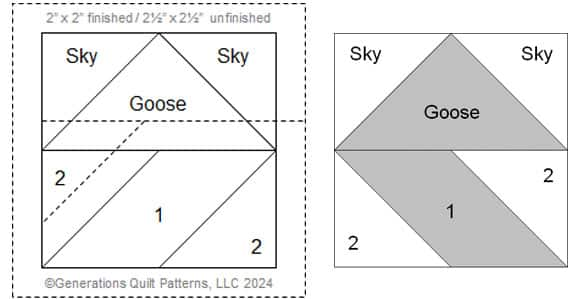 Colorado Beauty unit, from the pattern side (left) and the fabric side (right)
Colorado Beauty unit, from the pattern side (left) and the fabric side (right)Paper Piecing
NOTE: The pattern side is a mirror-image of the fabric side when piecing this block.
To paper piece them, click here for detailed instructions. (There's a link on that page that brings you back to here when you click it. 😃)
Traditional piecing with the Folded Corners technique
On the backside of the sixteen #2/Sky squares draw a diagonal line, dark enough to see but light enough so that it doesn't show through to the front side. I like to use a mechanical pencil because the line is reliably thin.
With RST, align a #2/Sky RST on the righthand side as show below. Make sure the pencil marking bisects the lower right corner and the top center (arrow).
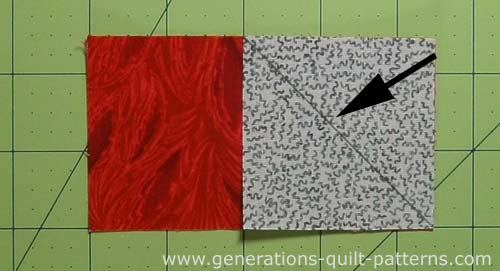
Stitch on the line. I use an anchor cloth (that's the nasty looking thing behind the presser foot with all the thread on it) so that my machine doesn't 'eat' the patches as they are fed into it.
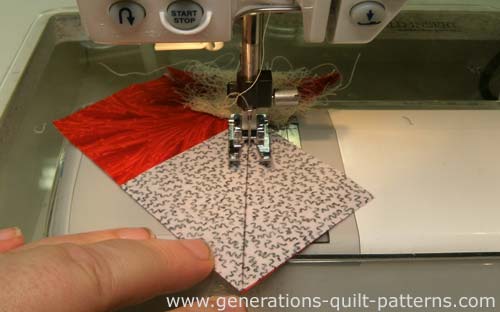
Press flat to set the seam. Then press open so that there are three layers of fabric in the upper right hand corner. Make a total of 8 like this.
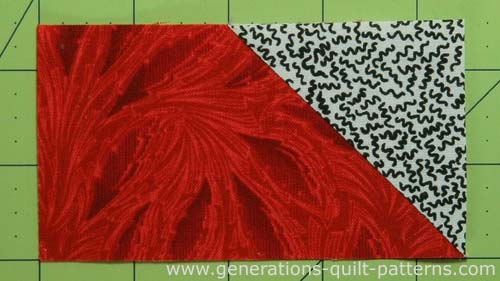
Decision Time for Trimming...or not!
At this point you need to decide about those extra fabric layers. If you're hand quilting, it goes without saying that you'll want those extra layers gone-gone-gone! It's not as important if you intend to machine quilt, BUT...
...those extra layers do add lumpy bulk to your seams.
You can either remove both of them leaving behind a 1/4" SA (top) or remove the extra layer of the #2/Sky (bottom).
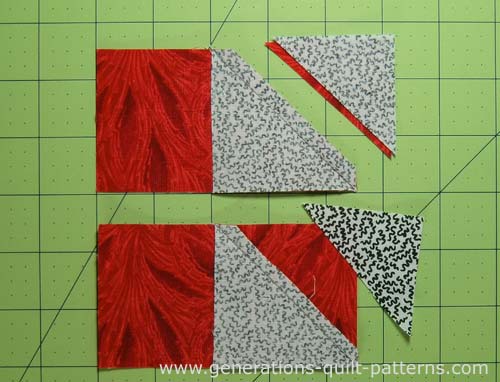
If all the layers line up beautifully, then I remove both. If
my sewing leaves a bit to be desired (and it happens to all of us at one time or another), I cut away just the one layer.
Because the rectangle is cut to the exact size it allows us to
fudge just a bit like this, if needed.
The choice is yours. With the Flying Geese units, if you are going to trim, you need to do it now, before the second Sky
is added to the goose. Once it's been added it's difficult go back and trim out layers.
To finish the Geese...
To four partially pieced units, with RST, layer a #2 on the left side, but this time with the pencil mark intersecting the lower left corner and the center of the top as in the photo below (top).
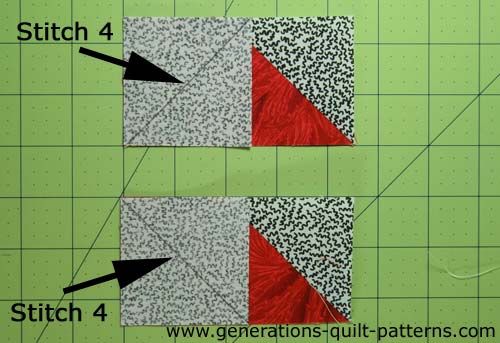
To finish the pieced rectangles...
With RST, align another #2 on the left hand side of remaining four. The diagonal marking intersects the upper left hand corner and the center of the bottom side. Use the photo above (bottom) for reference.
Press as before with the layers of the squares towards the corners.
Trim the extra layer(s) of fabric away just as you did for the first eight squares.
If you removed both of the extra layers, we can 're-press' one seam on the rectangle so that our seams will nest and making matching points easier.
As you look at its back side, we've pressed both SAs to the left. Use the photo below for reference.
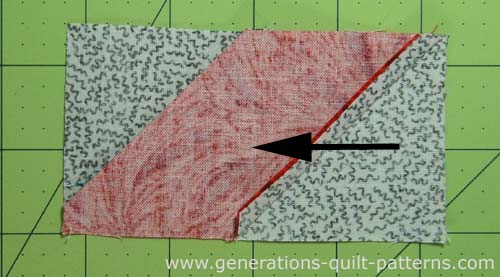
With RST, layer a stitched rectangle and goose unit. The SAs on the outside edge of it will nest together. I use pins to hold everything in place for stitching because it's a bit lumpy right now.
Press with the seam allowances towards the goose. (This is where out Besting Pressing Technique is really helpful.)
Repeat for the three remaining pairs.
🧩Assemble your Colorado Beauty quilt block
Lay the pieced patches out into rows. The goose points out of the center and is rotated a quarter turn as you move clockwise around your Colorado Beauty quilt block.
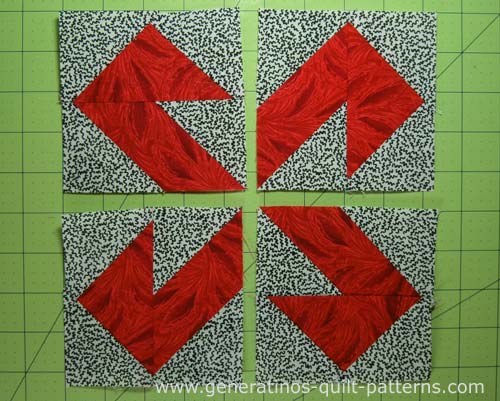
Stitch the patches into rows. Press the SA in the direction of the arrows.
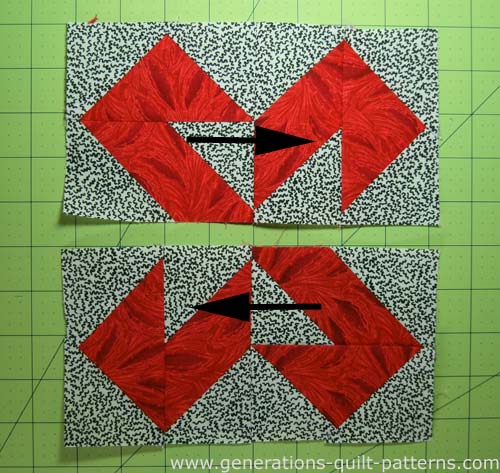
Beauty may be in the eye of the beholder.
But you must admit!
This Colorado Beauty quilt block is da-bomb!
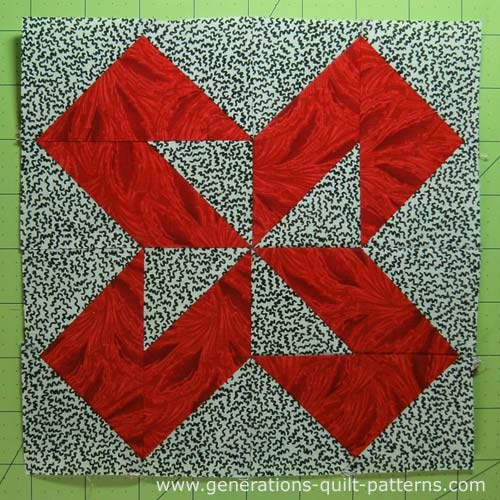
Common Variations
There are a few variations on this design, though all still emphasize the center pinwheel.
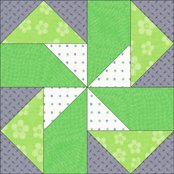
Seesaw
The rectangle has lost a HST.
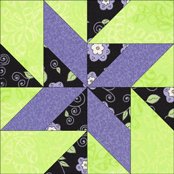
Land of Lincoln
The pieced rectangle is flipped end to end and the goose has lost one of it's sky patches.
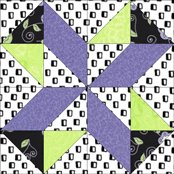
Lucky Pieces
The Flying Goose is now two HSTs!
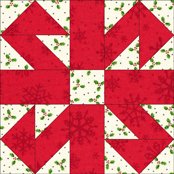
Jack in the Box
Rectangles (like a sashing) and a center are added to the original Colorado Beauty quilt block.
That's a Wrap, Folks: Your Patchwork Panorama is Complete! 🎬
You've conquered the Colorado Beauty block and created a fabric panorama to be proud of. 🖼️
Why stop here? Create a whole quilt top or mix with other blocks for a unique landscape. 🌄 Remember, you're piecing beauty, one stitch at a time.
Until we meet again, may your bobbins be full, and your seam ripper be lonely!😃
📌This pin is your ticket to the quilting high country.
Save it for when you're ready to reach new heights! 🎟️🏔️

🌀More playful pinwheel quilt blocks to stitch!
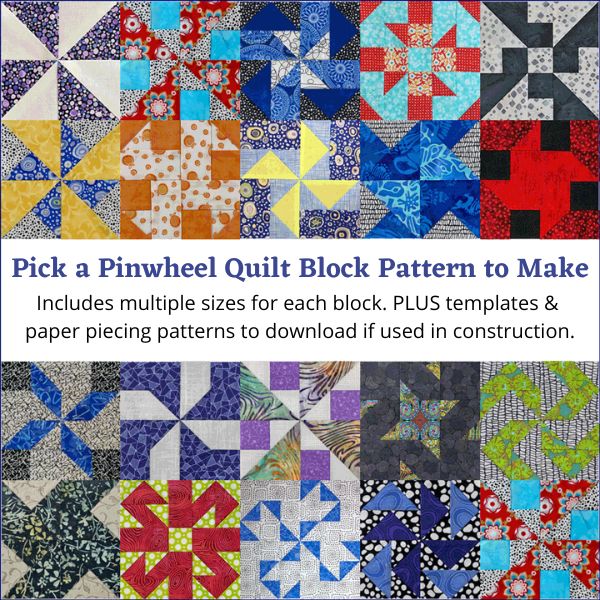
You've finished your pinwheel quilt block, and you're ready for more!
Our pinwheel quilt blocks are a delightful blend of playful interlocking patterns and vivid, eye-catching color. The interlocking patterns dazzle your eyes and inspire your creativity, while our step-by-step instruction ensures that you can create these stunning blocks with ease.
Click here to dive in and turn your fabric into MAGIC!
For even MORE blocks to make... 🧩🎨

...visit our Free Quilt Block Pattern Library, with over 230+ blocks to choose from in multiple sizes.
Free downloads are included in all sizes for any blocks require paper piecing patterns or templates.
- Home
- Free Quilt Block Patterns
- Colorado Beauty Quilt Block
